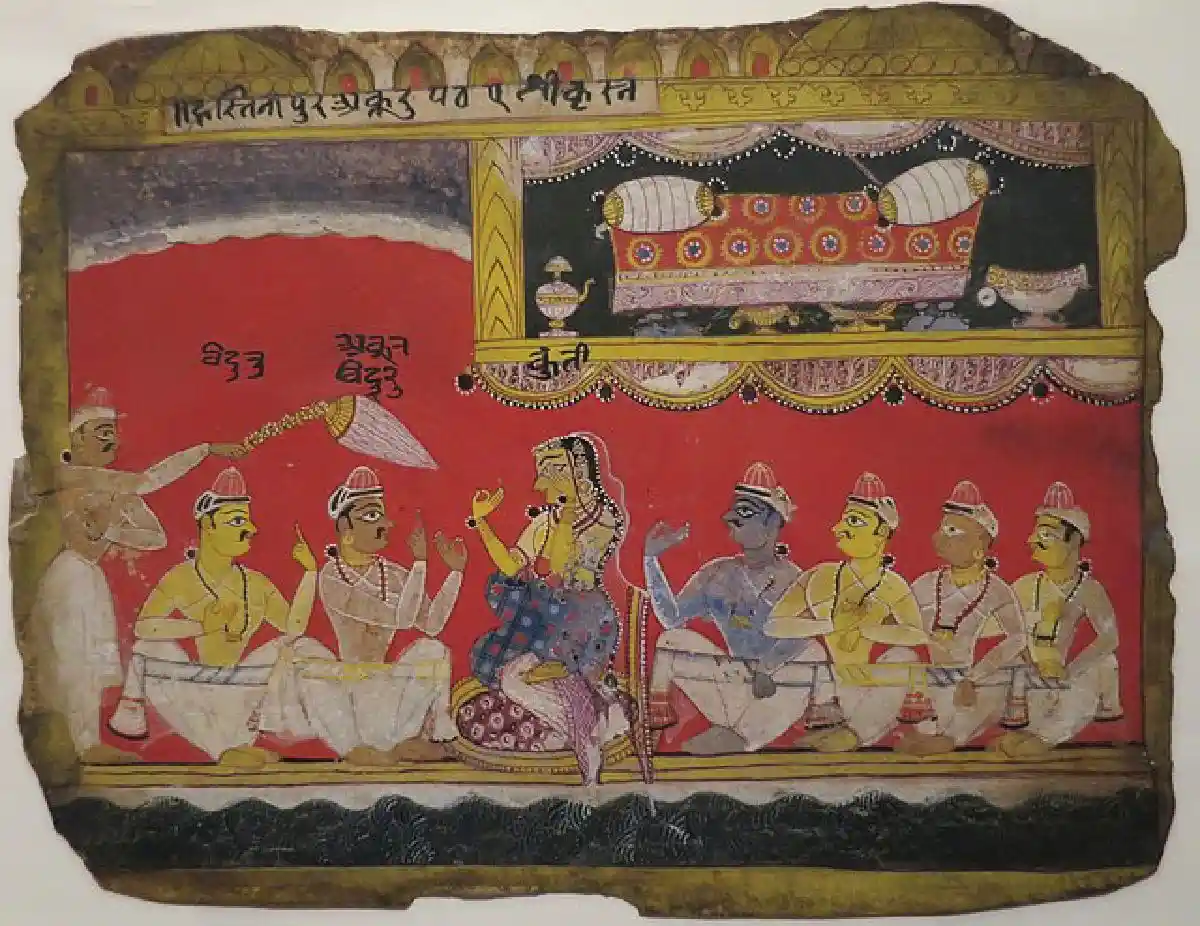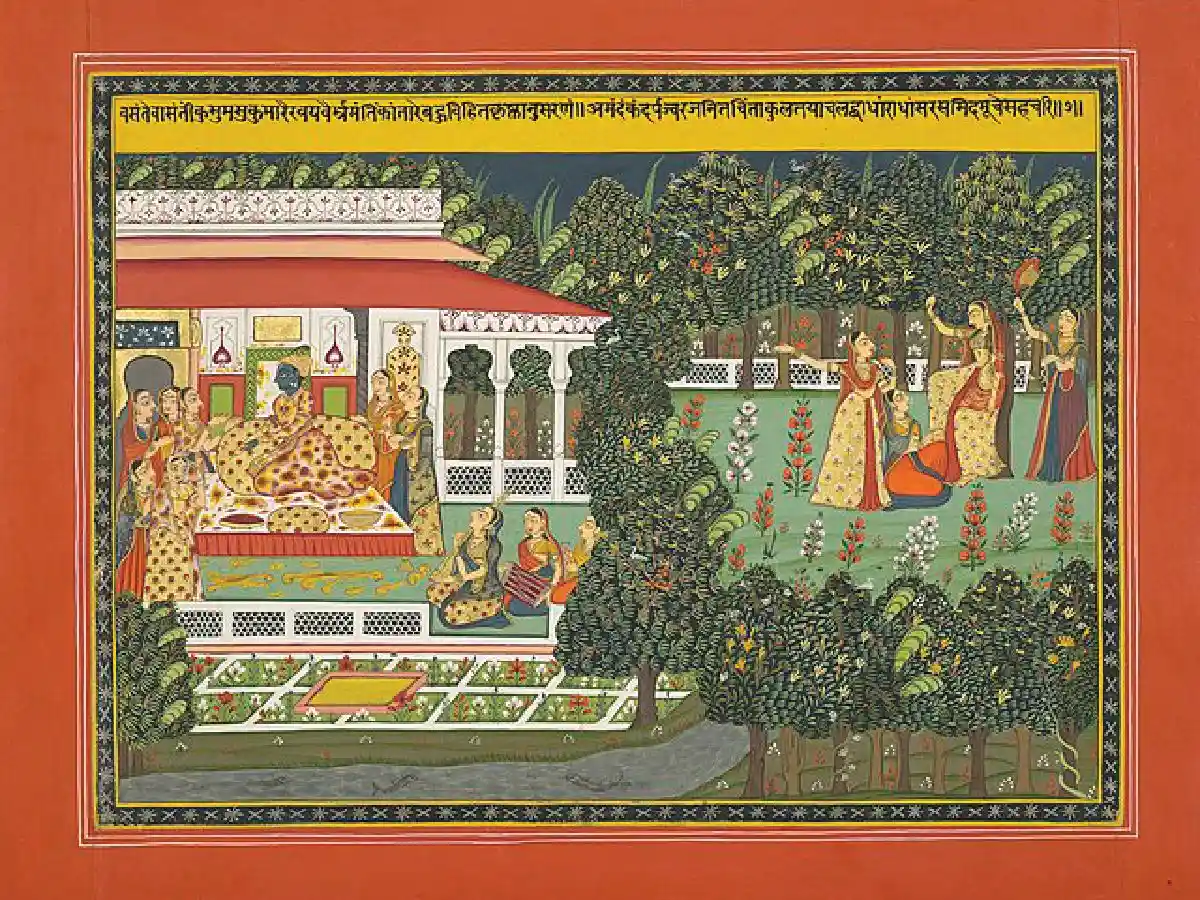Rajasthani Schools of Painting: A Prologue
An Overview on The Rajasthani School of Miniature Painting that was born out of migrating artists from the courts of the Mughal Empires. It is an amalgamation of many schools of art from multiple princely states nearby, making it a valuable resource for framing the stories of the time it thrived in.

Conversation with Kunti (Bhagavat Purana), Source: Wikimedia Commons
When the Mughal School of Miniature Paintings that flourished under the Mughal Emperors, generation after generation started to decline due to Aurangzeb’s orthodox beliefs, the art and its artists had to find new homes. The Royal atelier was also disbanded and this nudged the artists to find refuge in other states. These artists went two ways, some went to the nearby Rajasthani courts and the other chunk went to seek work under the Europeans, leading to the formation of the Company School.
The group of artists that found themselves in the Rajasthani courts, soon became the artistic hands that gave birth to the Rajasthani School of Miniature Paintings.
The Rajasthani School of Paintings refer to the art schools that existed in the princely kingdoms around Modern day Rajasthan during the time span between 16th to 19th centuries. The Schools of paintings are named after their states and some of the major ones are Mewar, Malwa, Bundi, Kishangarh, Jaipur, Jodhpur, Kota and Bikaner.
This school of painting was initially called the “Rajput Paintings” as most of the rulers of these states were Rajputs. The term was coined by Scholar Anand Coomarswamy and he had further categorized Rajput paintings into Malwa School (Central Indian states) and Pahari School (Mountainous Himalayan region of north-west). This nomenclature helped bring the much needed differentiation of this school of painting from the Mughal Miniature. However, with the evolution of the study of Indian paintings, the “Rajput Paintings” nomenclature is currently obsolete. Instead, we refer to these paintings as two different schools, Rajasthani and Pahari.
Though these princedoms were separated by short distances, they all developed and evolved into diverse school of paintings.
Their differences can be seen in terms of execution, preference of colours, composition, modes of narration, affinity for naturalism and focus on extreme mannerism.
These paintings were done on waslis, where desired thickness was attained by layering thin sheets of handmade papers and gluing them together. The outlines were then done in black or brown and the colours then were fixed therein through brief notations or simple patches. Colours were obtained from minerals and mixed with glue as the binding medium and the brushes were made from Camel and Squirrel hair. To complete each painting, they were burnished with an agate to give a uniform sheen. The entire activity was a teamwork that started with the master artist and finished with him, with other experts taking on their own mastered skills in between. The Scribe finished off the paintings that had texts at the end.
The topics of the paintings varied in specific subject matters, but had many common overarching themes.
Vaishvanism in the faith of Rama and Krishna were very popular in the central, western and northern regions of India by the 16th century as a part of the Bhakti movement. Krishna has a very special appeal, not only as a deity but also as an ideal lover. The idea of “love” was a celebrated religious theme and to depict so the representation of Radha-Krishna were often used.
Poetry, Literary works and Music were often taken as inspiration in the Rajasthani School of Painting. Some of the literary works whose storylines were often used are Gita Govinda by Jayadeva, Rasamanjari by Bhanu Dutta, Rashikapriya and Kavipriya by Keshav Das and Bihari Satsai by Bihari Lal. The Ragmala paintings were also a common theme, which were pictorial interpretations of Ragas and Raginis. Bardic legends and other tales of romance such as Dhola-Maru, Mrigavat,Laurchanda, Sohni-Mahiwal, Chaurpanchashika and so on were also a common theme. Texts like Ramayana, Bhagavata Purana, Mahabharata were all favourites of this School of painting.
Apart from the above, many paintings recording Darbar scenes and historic moments were also made along with the themes of everyday life like hunting expeditions, parties and picnics, war and victories, dance, music and performances, weddings and celebrations and portraits of important people like the Kings and his family, cityscape and flora and fauna.
Like every other painting to ever exist, the Rajasthani School of Miniature Paintings captured in detail, the essence of their time, their culture, heritage and their legacy.

Rajput Folio from Gita Govinda, Source: Wikimedia Commons


